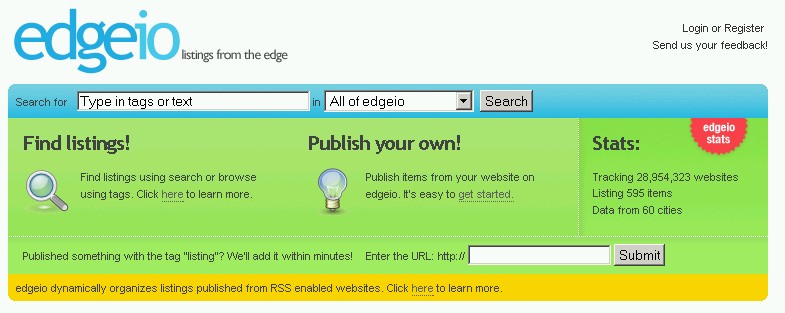A few random things learnt today…that you have to blag your way into every bar when they ask for ID. I have a reluctance to carry around my passport, but so far the line “I’m English, I don’t have picture ID” seems to work as managed to get into the bars OK so far.
Another observation is the decline of the wristwatch. Only a minority of people seem to wear them. So far reasons dicussed are the every present mobile phone, the use of the laptop to tell the time or the fact that typing whilst wearing one is a problem, But with this reduction, it means that my usual method of looking at everyone else’s watch to confirm the time does not work here very well.
Yesterday was a quiet day for me and panels. I ended up only going to one formal one, about women and visibility. This is a conversation that is not new ont he web or anywhere else, and it is not going to be sorted by any single panel, although their did seem to be a few questions in the mix aksing a strightforward ‘what is the secret’. The general consensus from the panel was that you need to work at being visible – there is no secret, you have to get out and make yourself visible, you have to put in time and effort and commit do following whatever strategy you desire.
At one point the audience was asked how many of them considered themselves visible? Very few hands were raised at this – but what does that question mean. A number of people in the room had not heard of any of the panel, who were, presumably, picked because they had visibility. I’ve got between 30-40 subscribers (one day I may switch to feedburner to get actual numbers…) – how visible does that make me? So what is the question? Are people looking for visibility within the general internet population, within their own specialist area, within their peer group whether that be split by expertise, gender or specialist subject. There’s no one question, just as their is no one answer. One solution proposed by Liz Henry was a more formalised method of identification, of classification , so it makes it easier to find people. Some apprehension was expressed at giving out such information, with some preferring the anomynity that the web gives. Should we more offline perceptions onto the web? It’s too late for that, they’re already there. If they weren’t, these questions would not be there. T
The web is the most equal of spaces – use follows population in general – 50% of users are women, 50% of bloggers are women. I don;t know if the question is just being asked in the tech/conference area, where there is a real offworld bias that reflects online – do other blogging communities as the same question?
At lunchtime, I went along to a geek lunch. Apparently a new departure for SXSW, there were focused lunch discussions, with this one being on ‘Who owns the creative’ The owners of the conversation (as much as it could be owned) were Jane Wells and Chris Messina. Eight of us had an interesting discussion about creative, IP and moving into open source discussion. There were some nightmare tales of companies who want to own you and everything you do 24*7. My previous company used to do this, but stopped about 10 years ago – i think it was partly tied into the job for life environment. But this does not happen any more, so the contractual clause was dropped. But it appears to be live and well in the IT companies.
This conversation finally chrystallised a thought that I’d been dwelling on following an interview I evesdropped on with Piers last week. He was asked how he could make money if all his thinking and trnedspotting is put on the blog for anyone to see. It is the same for open-source software – Simon Phillips definitely had a point about propietry software slowy dying except for specialised situations. ANd it is becoming the same for some content/creative in a way. My thoughts are that is not the information, the open source software of the raw creative elements that will necessary make people money going forward, but the value they can add to it. So for trend spotting and strategising – everyone has access to the same information, the expertise you pay for is what they do with it and what they turn it in to, not for some mysterious source of private info that you;re not sure before the fact whether it can be turned into something useful as all previous work is hidden and sioloed. For open-source, it’s not the software itself but the value that can be added from packaging up, supporting it, making it do something special for the client. For creative it can be making things that people drive poeple to want them and use them. There are examples of bands and artists that make their living solely from web based creative. But that won’t work for all, this is not a model that can be ubiquitous.
The final conversation of the day was all arounnd tagging. This late night natter ended up being podcast and videod by the side of the road (it was the quietest place that could be found) by Eric Skiff and Christopher St John..
We were talking about 3 kinds of tags – personal, group and fixed and how they can be applied both internal and external webs. .
The latter is the typical taxonomy, topdown fixed categories. FOund in document management systems, where documents or information have a metadata assigned to them based on the design principles. Little room for movement, they are fixed. Information canb only be sorted in certain ways, that are either agreed witht he community, or, more likely, imposed by the system owners. I see this only being useful when the information collected can be predicted and has a level of permanance. When you know waht you are going to get, there are unlikely to be excpetions and the data needs to be kept for a while – the community here needs to be closed with little dissent allowed. ANy changes would come through a process.
At the other end of the spectrum are the personal tags. the ones that are only applicable to one person, that mean something that would not easily be recognised by others. These can be extremely ephemeral, or permanent, but they are not really designed for more than one persons use. Blog and photo tags fall into this category, but it can also be how a person organises and names files (either physical or data).
In the middle are the emergent group tags. These often start off as individual tags, but through a process of being shared and examined, a group consensus can emerge (or can be suggested). An example is here at SXSW where there are a number of different tags being used on Flickr to record events. SXSW, SXSWi, SXSWi2006, SXSWi06 etc etc. My behaviour, and the behaviour of others I’ve spoken to, is to adjsut their tags to meet the group norm. Taking a look at the most popular tags on flickr allows you to adjust your own. But you don’t have to – what this is demonstrating is group behaviour where you want your stuff to be noticed. If you were only interested in tagging your own stuff for your own study, then you would stick to the ones that you would wnat. By looking at the group norm and adjusting to that, you are asking to be part of a group and, more inportantly, asking for attention as part of that group.
Into this middle category I see group mandated tags falling – things like barcampaustin, or interactiveplaypen which the group behind the lego pits here are asking people to use for pictures of the lego. These requests ask you to join the group, to share your work, to allow a multiple perspective of the event to evolve.
One otehr aspect I see from these level of tags is related to level of permanance of information. Exploring options for internal intranets, I can see blogs, wikis and document management systems falling a spectrum. Data and information becomes more fixed and loglived as you proceed through the spectrum of tools. A blog may be for the moment, to look at current events and discussions that are happening in the environmen – a personal perspective even though it invites conversationst. The information would always be there, but may onoy be relevant for a moment. Wikis are more of a resource for group knowledge; can be built on and flexed, change with time, but still a record of the group knowledge of the time. And DMS is for fixed stuff, that changes slowly, that is legal or policy driven, or needs to be mandated top down to be used by all the community at any one time (eg annual planning documents etc).
Both the information and the tags associated with the info can move up and down this ladder. On the web, much of this is emergent behaviour – it is self -policed (and then we hit standards bodies). In a business environment the same model can be applied – the lower levels are self policied and you only need officialdom as you het the fixed stuff. But having gardeners to direc the process, to help emergent tags and make sure the taxonomy can reflect such stuff is a critical role.
Enough of yesterday – need to go now and think of today.


